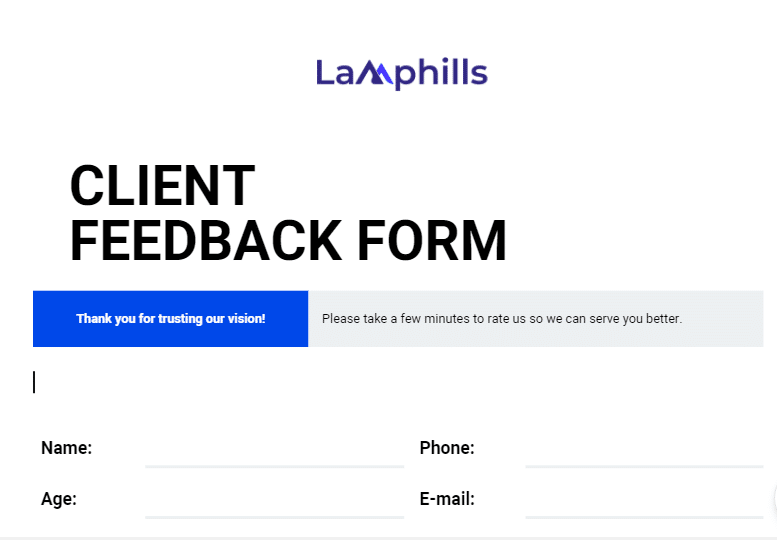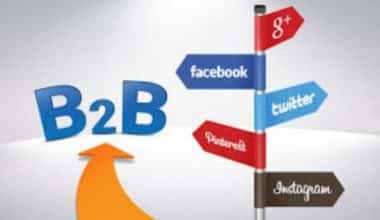With the development of new technology, which alters how customers engage with businesses, marketing trends are always shifting. This gave birth to digital marketing trends. Keeping abreast of these developments will facilitate the development of effective marketing plans. Whatever the industry, a company’s profitability can be directly impacted by its ability to effectively sell its goods and services online. In this post, I shall define digital marketing trends and discuss top trends that you may need to take advantage of in 2024.
Key Points:
- Digital marketing trends are the most popular social marketing actions going on on social media.
- Businesses can now use AI tools to now analyze data, tailor customer experiences, and improve digital marketing campaigns.
- These trends help digital marketers improve their interactions with their target audience.
- Your audience and customers will participate more in your campaigns if you follow digital marketing trends.
- With the right trend, brands are able to convey their ideals to their target market.
What Are Digital Marketing Trends?
Digital marketing trends are significant shifts in the strategic direction of the digital marketing environment that affect how marketers should engage with their target audience. These shifts include the development of marketing strategies, consumer attitudes, and underlying technologies.
These trends help digital marketers improve their interactions with their target audience. It is imperative to leverage these trends in order to propel your business forward and maintain a competitive edge. Knowing these digital marketing trends will help you grow your business and attract more customers.
What Are The Importance Of Digital Marketing Trends?
Digital marketing trends are beneficial because:
- It enables companies to transcend market limitations and offers fresh perspectives and chances.
- Adhering to trends keeps you visible to an audience far and wide.
- Therefore, keeping a close eye on these changing patterns helps you gain a solid grasp of your target market. Better decision-making follows naturally from this, and not just for you as a marketer but for everyone in your company.
- It’s possible for your brand to become the archetype that defines a new industry norm and influences the course of events in the future.
- Keeping up with marketing trends enables you to identify potential risks and possibilities for your company early on, allowing you to modify and adapt your strategy accordingly.
- One of your best defenses against brand stagnation is to keep up with marketing trends, which are a reflection of the most recent advances in the industry, customer preferences, and technological breakthroughs.
- Keeping abreast of marketing trends highlights new opportunities in your sector.
Best Digital Marketing Trends 2024
Trends in the ever-evolving field of digital marketing shift with the seasons. Maintaining relevance and competitiveness requires adhering to digital marketing developments. However, it’s also critical for brands to modify each trend to fit their unique narrative and business plan.
You can use the following 21 digital marketing trends in your campaigns in 2024:
#1. AI Marketing Automation
Businesses can now analyze data, tailor customer experiences, and improve campaigns in new ways thanks to the integration of AI with marketing. AI-driven chatbots and messaging applications, for example, are transforming consumer interactions by offering instantaneous solutions and personalized experiences, thereby fostering more genuine customer relationships.
AI-driven marketing technologies, such as voice search optimization, chatbots, and predictive analytics, will be much more common by 2024. Business executives must, however, push for a more cooperative relationship between humans and AI rather than only depending on “set it and forget it” automated techniques.
#2. Augmented Reality (AR) and Virtual Reality (VR)
Brand stories and channels for customer interaction can be established with the aid of immersive technologies such as AR and VR. I see a deeper integration of these technologies with strategic marketing initiatives by 2024. For instance, brands like Coca-Cola make use of Augmented Reality to enhance their consumer experience and brand value by providing virtual try-on experiences.
#3. Hyper-Personalization
AI and machine learning developments have made it possible for sales and marketing teams to access a multitude of customer data in order to effectively curate and customize offers, product recommendations, and content.
Consider Jack, a music lover on the Spotify platform. As he browses through several songs, the platform’s website’s AI examines the songs he is listening to and his engagement habits. This will help Spotify to offer personalized recommendations to him based on this data.
However, when handling client data, businesses have a responsibility to operate properly. You have to be open and honest about how your company gathers, uses, and obtains consent for this data.
#4. Influencer Marketing
Contemporary consumers prefer authentic interactions with influencers over endorsements. The rise of “micro-influencers,” or those with tiny but very active followings, is probably going to be fueled by this change.
In light of this, think about collaborating with influencers who respect authenticity and have more specialized and targeted audiences.
#5. Video Marketing
In video marketing, short-form videos, live streaming, and interactive content are becoming more and more crucial. Businesses that successfully apply these trends will gain a competitive advantage and be able to dynamically and engagingly convey their brand messaging.
For instance, as part of your marketing approach, you can use live Q&A sessions, interactive lessons, and brief videos to engage learners and produce accurate results.
Here is a guide to video storytelling:

Read Also: Video Storytelling: Its Benefits to Your Brand
#6. Voice Search Optimization
According to recent statistics, there are around 200 million voice assistant users in the United States alone. Gaining an understanding of and applying voice search optimization strategies will help to increase the discoverability of your content and raise its placement in voice search results. For instance, while deciding on search terms and phrases, think about utilizing longer, more conversational questions.
#7. User-Generated Content (UGC)
UGC offers social evidence and engagement, making it a potent tool for brand marketing. By holding interesting challenges and contests with particular hashtags, themes, or formats, brands may promote the development of user-generated content. Additionally, reach and engagement can also be increased by collaborating with relevant influencers.
UGC involves the audience in the development of content, which can increase consumer loyalty and brand trust. This strategy can help create a sense of community among customers and mold the narrative surrounding businesses.
#8. Social Commerce
Social media platforms have a substantial impact on the digital purchasing landscape as they gradually transform into e-commerce ecosystems. I think big platforms like Facebook, Instagram, and TikTok will set the standard for incorporating more noticeable purchasing elements into their user interfaces in the upcoming years. This includes improved product discovery, quicker shopping trips, engaging experiences, and social proof to encourage repeat purchases.
#9. TikTok is the way to go.
Now that it’s established, TikTok is a formidable marketing weapon. Make sure your brand has a strong TikTok presence if video marketing is one of your goals, which it should be.
With one billion monthly active users, TikTok is the social media site that gains new fans the fastest. The app encourages people to research products and brands online.
Here are seven ways to go viral on TikTok:

Check out some of the Top 21+ TikTok Ideas that Inspire Me Everytime (The Ultimate Guide).
#10. Be Authentic.
Customers are looking for brands that align with their beliefs more than before. Growing interest is being shown in ethics, sustainability, and social responsibility. Users also want transparency and customized experiences.
Authenticity will be essential in 2024 to foster brand loyalty and trust. Thus, make an effort to be honest with your customers about:
- Your brand, including the products and services you offer.
- Your company values.
- Any social and environmental initiatives.
Furthermore, another way to demonstrate that you’re authentic is by sharing user-generated content. Sincere testimonials, experiences, and tales are valued by customers and can generate a natural buzz for your business. Credibility and engagement can be increased with the use of customer images, videos, and comments.
#11. Be Mobile-Friendly.
One digital marketing innovation you shouldn’t ignore is being mobile-friendly. It is imperative that the material on your website is readable on all devices—laptops, smartphones, and tablets. Users will leave your website quickly if they are unable to access it or find it difficult to browse.
Although it requires a sustained investment, mobile optimization is necessary to maintain competitiveness in the e-commerce industry. Test your website frequently on various mobile devices, keep an eye on your performance, and adjust as necessary to new developments or trends.
#12. EEAT.
Experience. Expertise. Authoritativeness. Trustworthiness. These 2024 digital marketing trends serve as Google’s benchmark for evaluating the caliber of web content. The most beneficial and pertinent material rises to the top of the ranks when users utilize Google to research goods, services, and information, thanks to these quality signals.
To remain competitive, marketers must quickly become familiar with the idea of EEAT, especially in light of the rapid rise of AI-generated web content. Your marketing objectives can be fulfilled by producing genuine and beneficial content. To accomplish this, you can:
- Producing original content
- Using credible sources
- Utilizing user-generated content
- Prioritizing readability, structure, and engaging visuals
- Transparency and author credentials.
Get more information about this here: What Is Authoritative Content? How It Is Used and Steps To Creating One
#13. First-Party Data.
Digital marketers have long relied on third-party cookies as a crucial tool for tracking user behavior and producing customized and targeted ads. However, in order to continue providing individualized and targeted marketing, marketers will need to rely on priceless first-party data due to a refocusing on user privacy and protection.
First-party data is gathered straight from customers and gives brands a better understanding of their target market to create more targeted advertising. Among the first-party data are:
- Website interactions
- Transactions
- Social media engagement
- Surveys
- Customer feedback
- Email newsletters.
You can make use of our customer feedback template to get the first-party data that your business needs:

#14. Produce Interactive Content
Including interactive content is a good way to let prospective clients engage with a business and develop a sense of familiarity with the brand. This degree of contact can be attained through a few different methods, such as:
- 360-degree interactive films with user-controlled camera movements
- Several surveys and quizzes about the products
- Interactive advertisements using augmented reality
- Surveys on topics pertaining to the business’s offerings or its areas of expertise
#15. Social Messaging Apps
Social messaging applications are primarily used for private communication, but they may also be a useful tool for marketers. By giving customers the ability to engage and communicate with a company directly, a message component added to a website can help them feel more connected to the brand. Businesses can streamline this process by developing automatic responses to the most commonly asked queries.
Read Also: 8+ Communications Skills Every Specialist Needs to Thrive in 2024
#16. Make Use Of Audio Content
Audio content is becoming more and more prevalent online. Podcasts and audio chat rooms give people a means to connect and engage in new kinds of communication. Brands can concentrate on producing longer-form, more in-depth content thanks to the audio format. Businesses tend to become more aware of their brands when they use audio material.
#17. Practice Social Responsibility
Consumers today appreciate businesses that put social responsibility first. This entails adhering to a code of ethics for business. To boost consumer trust, you have to be transparent about company dealings. Consumers who feel that a company is treating both its customers and its staff fairly are more likely to support it. A business can demonstrate its social responsibility by publicly stating and maintaining its ideals.
Read Also: 10 Social Responsibility Examples That Will Restore Your Faith in Humanity
#18. Experiential Marketing
Customers can interact with the product or brand at an event thanks to experiential marketing. An illustration of this would be a bakery company opening a pop-up shop in the heart of a large metropolis so that people may sample the new fruit cake flavor. These are entertaining events that are very shareable on social media. When participants highlight an organization on their social media profiles, the organization can gain free publicity.
#19. Create Story-Driven Content
Content with stories and narratives grabs people’s attention more than information that is fact-based. When a business shares information about its background or manufacturing process, customer interest and engagement rise. For instance, businesses may make a quick film outlining their background or obtain first-hand accounts from past clients.
Read Also: 13 Digital Storytelling Examples that Will Inspire You
#20. Native Advertising
Native advertising, often known as sponsored content, is advertising that blends in with the design and layout of the platform it appears on. A paint business might, for instance, write a piece about projects that consumers can finish with a new type of paint in a home improvement magazine. Because it is perceived as more intriguing and relevant than traditional advertising, this kind of marketing sees higher levels of engagement from potential buyers.
#21. SEO Keyword Optimization
The goal of search engine optimization, or SEO, is to increase both the volume and caliber of visitors to a business website via search engines. Businesses are devoting more time and resources to SEO tactics as search engines advance, and some are even employing SEO specialists to assist with insight reports. Businesses can use these reports to find keywords related to their business that are searched for. One quick and low-cost strategy to increase internet traffic for a business is to use relevant keywords.
Read Also: The Ultimate SEO Content Strategy: Rank #1 on Google in 90 Days
What Are the Marketing Changes in 2024?
AI-driven digital marketing trends, such as voice search optimization, chatbots, and predictive analytics, will be much more common by 2024. Businesses must, however, push for a more cooperative relationship between humans and AI rather than only depending on “set it and forget it” automated techniques.
What Is the Next Big Trend in Digital Marketing?
Using chatbots for advertising and marketing is the newest trend in digital marketing. Chatbots have been used by businesses for a while now, and marketing is greatly benefiting from this trend.
What Is Forbes’s Digital Marketing Forecast for 2024?
Forbes forecasts that in 2024, digital marketing trends like SEO to increase online presence, social media marketing on sites like Instagram and TikTok, and content marketing will all remain popular.
What Do Consumers Want in 2024?
Customers demand health and wellness products that are supported by research and data anywhere in the world. Top-tier businesses should assess how they may expand into these and other wellness-related growth sectors (including women’s health and healthy aging).
What Is AI in Digital Marketing in 2024?
AI in digital marketing platforms allows you to buy, place, and optimize advertising automatically in real-time based on audience demographics, behavior, and context. This makes it feasible for you to effectively serve your ads to the appropriate audiences at the appropriate times.
Which Marketing Trends Do You Think Will Dominate In The Future?
These are the digital trends that will rule the future:
- Customer Experience to keep track of consumers’ opinions about the brand’s goods or services.
- Engaging employees will boost brand participation among customers.
- Using storytelling to visualize content. because 180% more engagement occurs in postings that include visuals.
- Personalization: Eighty percent of customers said they would participate more if they were given a tailored experience.
Is Repurposing Content A Digital Marketing Trend?
Yes, it is, as it is a technique that can make it simpler for you to engage with the intended audience. A piece of content that performed better in the past can be modified and shared on several channels. Similar to how a written piece of content can be transformed into a video.
How Do You Find Out The Trends In The Digital Marketing Industry?
In order to identify and track the trends in digital marketing, marketers must:
- Follow news and publications in the industry.
- Locate the most recent research and report readings.
- Use analytical tools to determine which marketing trend best suits your needs.
- Keep an eye on the behavior and comments of your clients.
- Compare your work to that of your competitors.
Related Articles:
The Future of E-commerce Content: Trends and Strategies You Can’t Afford to Ignore
Emoji Marketing Trends: How I Use Emojis in Digital Marketing Campaigns in 2024
The Only 6 PR Industry Trends That Actually Matter in 2024






